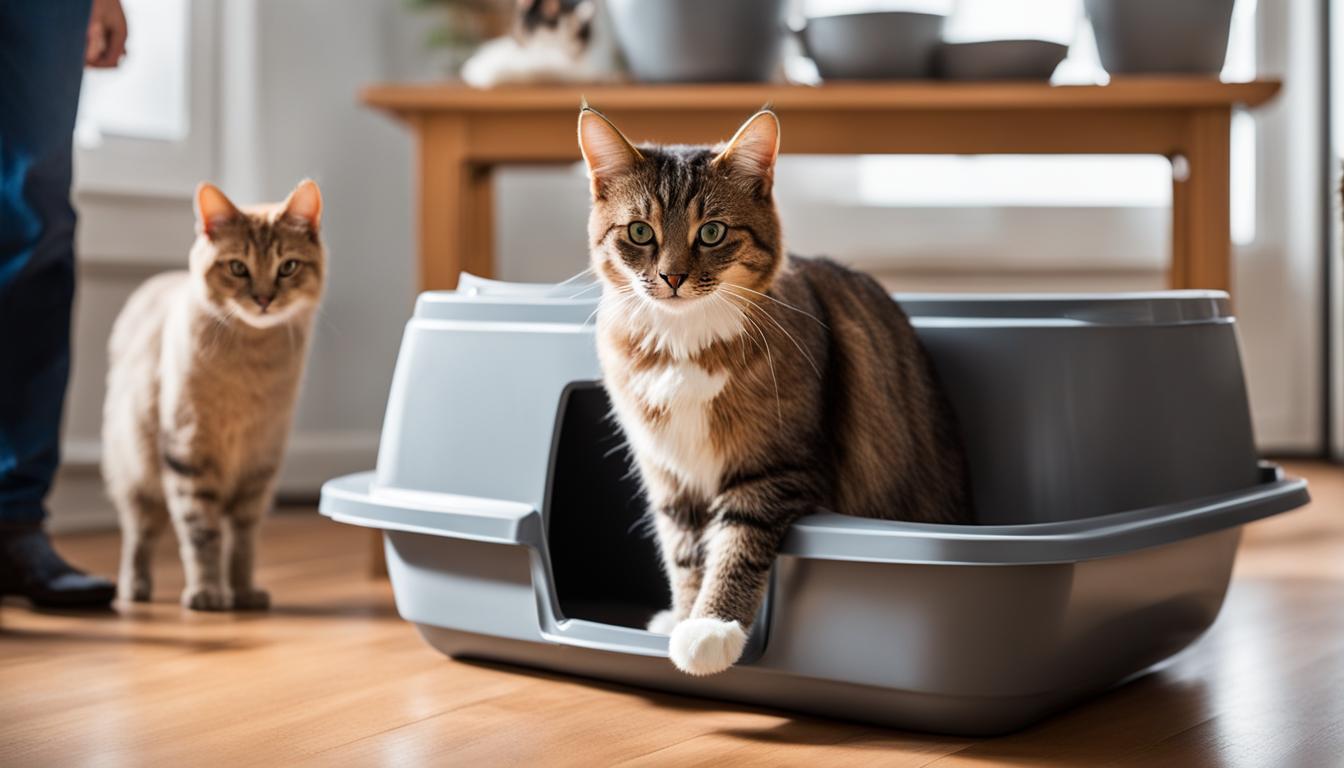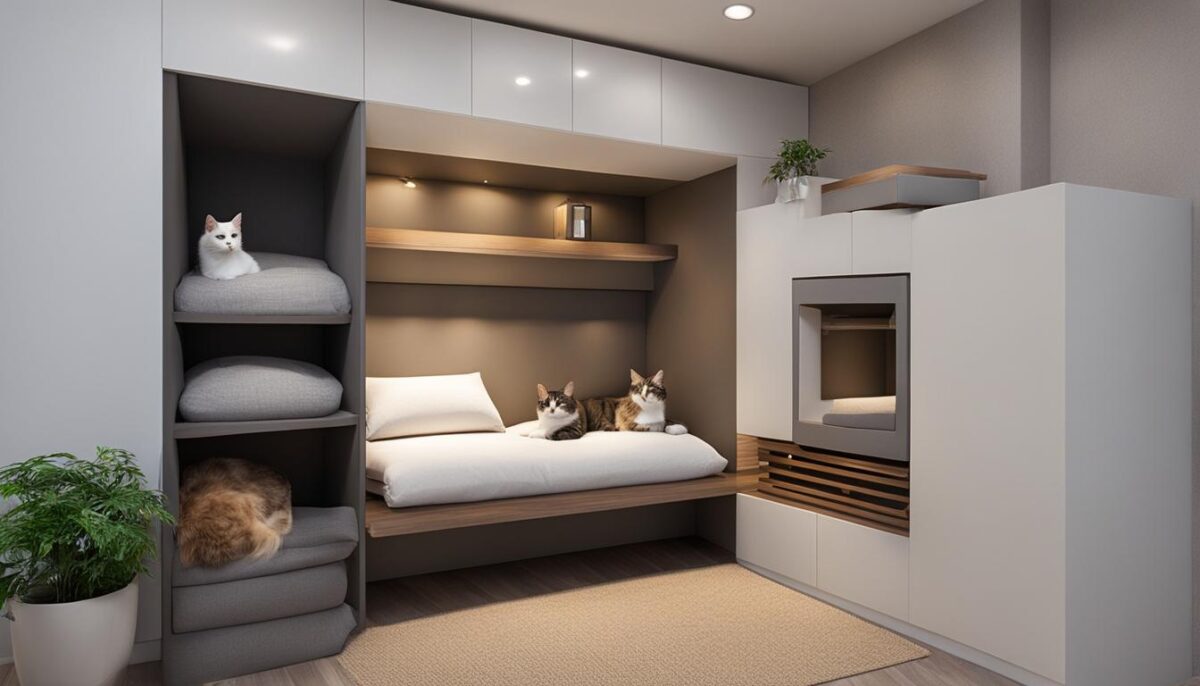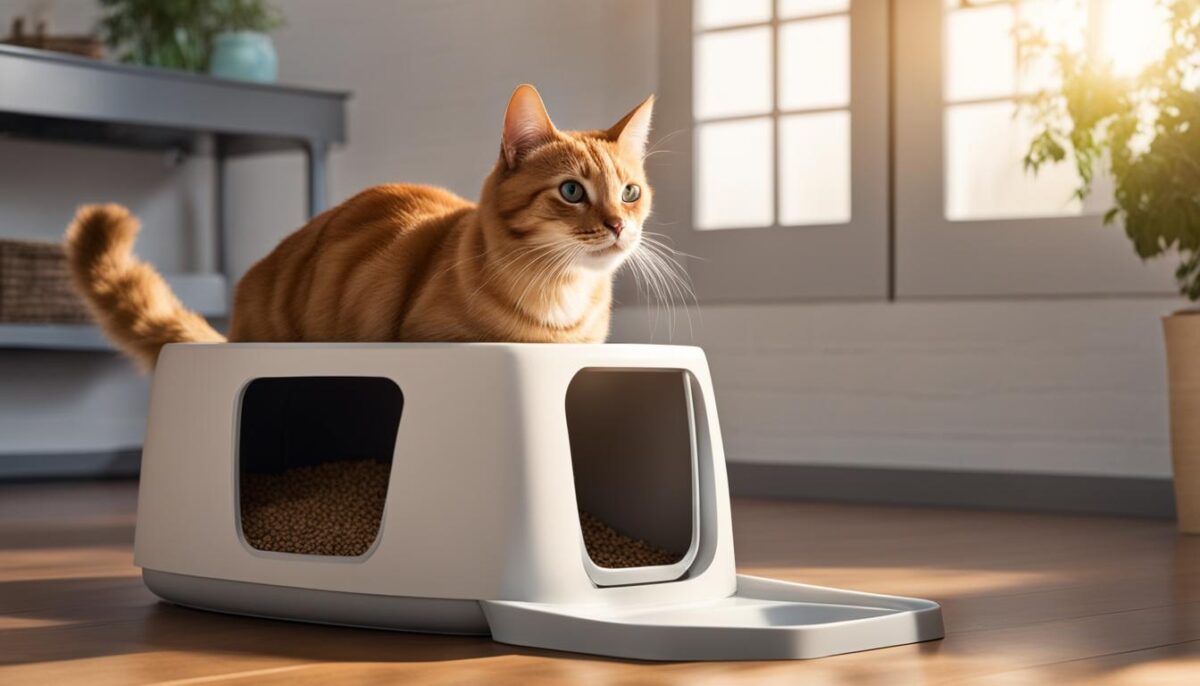Are you ready to teach your older cat to use a litter box? It’s a big step for both of you, but don’t worry! With the right steps, litter box training your adult cat can be easy. If your furry friend has lived outdoors or just never used a box, it’s okay. Adult cats can learn feline bathroom habits with your help. We’ll go through everything you need to make this work. From finding the perfect box to getting your cat comfortable, it’s all about being patient and positive. Let’s make your cat’s litter training a success together!
Understanding the Basics of Litter Training Adult Cats
So, can you really teach an older cat new tricks? Absolutely! Cats naturally want to cover up their waste. This is good news for you and your indoor floors. With adult cat litter training, you’re helping your cat do what comes naturally. Just give them the right spot, and they’ll do the rest. Whether your cat is an old pal or new family member, with a little time and understanding, you’ll both have this litter box training down!
Key Takeaways
- Patience is key in training
- Older cats can learn too
- Litter box training matches natural habits
- Having the right litter box matters
- Encouragement helps your cat learn
Understanding the Basics of Litter Training Adult Cats
Do you think an adult cat can learn new tricks? Like kids, adult cats can learn a lot. They can get really good at using a litter box for their bathroom needs! This is because they want to keep things neat and bury their waste. It’s a part of their litter box habits.
Is Litter Training an Adult Cat Possible?
You may be asking, “Can my big cat really learn to use a litter box?” Yes, your furry friend can! Most cats already like to dig and hide their waste. So, when you give them a litter box, it’s almost like they say, “Aha, this is my place!” This is part of their cat bathroom behavior.
The Natural Instincts That Aid in Training
Even if your cat used to live outside, they can learn about litter boxes too. Outside, they dug holes and buried their business. Inside, the litter box is like their own little patch of outside. It’s cozy and safe. By matching their adult cat training to what they know, they’ll learn to use the litter box super well. And you’ll be happy because your home will be cleaner!
Choosing the Right Supplies for Your Adult Cat
When you decide to teach your adult cat to use a litter box, the first thing to do is pick litter box accessories.
Litter Box: You need to start with a big and comfortable litter tray. Make sure it’s big enough for your cat to move around. A big box makes your cat happy and helps with their training!
Litter: Next, think about the cat litter types. Many cats like litter that clumps together when it gets wet. Clumping litter is good because it’s easy to clean. Cats also usually like litter that doesn’t have a smell. So, it’s best to avoid litter that smells strong.
If your cat is older or not able to jump well, get a litter tray with low sides. This type of box is easy for them to get in and out without any trouble!
Here’s a helpful list of things to get for your cat:
- Two large litter boxes
- Clumping, unscented litter
- Litter scooper for cleaning
- A mat to put under the box to keep the floor clean
Remember, the right box and the right type of litter make all the difference for your cat. And, of course, always show your cat lots of love and patience while they learn something new!
| Type of Litter Box | Pros | Cons |
|---|---|---|
| Open Litter Tray | Easy for cats to enter and leave | Can be messy as litter may spill out |
| Covered Litter Box | Keeps odors and litter inside | Some cats may not like the enclosed space |
| Low-Sided Litter Tray | Great for older cats or cats with mobility issues | May not contain litter as well as taller boxes |
Litter Training Adult Cats: Setting Up Your Space
When you start teaching your adult cat to use the litter box, the place where you put it is really important. You want to pick a spot that’s calm and doesn’t have a lot of noise or people walking around all the time. That way, your cat can feel safe and not be scared when they need to go.
Finding the Ideal Location for Litter Boxes
Think about where your cat likes to hang out. You don’t want to put their litter box right next to where they eat or drink. Cats like to keep those places separate. If you have a house with more than one floor, it’s a good idea to put a litter box on each level. This helps make sure your cat can always find a place to go, no matter where they are in the house.
Creating a Low-Stress Litter Box Environment
If you have an older cat or a cat that doesn’t move around as easily, you might want to set up some extra litter boxes. Put these boxes in places they can get to without climbing or jumping too much. Remember, the easier it is for them to get to the box, the less stressed they’ll be, and the happier they’ll feel about using it!
| Litter Box Placement Tips | Why It’s Important |
|---|---|
| Quiet area with low traffic | Reduces stress and provides privacy |
| Away from food and water | Cats prefer not to eat where they eliminate |
| Easy access for senior cats | Accommodates limited mobility |
| Multiple levels of the home | Prevents accidents and encourages consistent use |
By following these tips, you’ll create a stress-free litter area for your cat. They’ll understand that the litter box is their space to use, and this can make training a lot easier for both of you!
Introducing Your Cat to the Litter Box
When you’re introducing a litter box to your beloved cat for the first-time litter box usage, it’s all about making them feel safe and at ease. Start by placing the box in a quiet spot where your cat likes to hang out. Let them take their time to sniff and touch the new box. This is their way of saying “hello” to it!
As your cat explores the litter box, give them lots of happy talk, pats, or even a yummy treat! This is called positive litter training, and it’s like saying “Good job!” to your cat. They’ll learn that the litter box is a great place. Remember, always be super patient!
| What to Do | What Not to Do |
|---|---|
| Let your cat explore the litter box on their own time. | Don’t rush your cat—it might scare them. |
| Give treats and praise for showing interest in the box. | Avoid getting upset if they don’t use it right away. |
| Place the litter box in a calm, quiet area. | Don’t put the box near loud noises or where there’s lots of foot traffic. |
If they step in and use the box, that’s awesome—give them extra love! If they’re still figuring it out, it’s okay. You’re doing a great job helping your cat learn something new. Before you know it, your cat will be using their litter box like a pro. High paw!
Determining Your Cat’s Litter Preferences
When it comes to making your fluffy friend comfy, choosing their litter is super important. Every cat is unique, and your buddy might like one type of litter over another. Trying out different kinds can help you find out what your cat loves best!
Types of Litter: Clumping vs. Non-Clumping
Let’s talk about the two main types of litter: clumping litter and non-clumping litter. Cats often find clumping litter cool because it makes it easy for them to cover up after using the bathroom. This type of litter sticks together when it gets wet, making cleanup super quick for you too!
On the other paw, non-clumping litter doesn’t stick together, but it can still be a good choice! Some cats like it because it feels softer or more natural, kind of like the dirt they would find outside. It’s all about what your cat feels most comfy with.
How Scent and Texture Affect Your Cat’s Choice
What smells good to us might not smell good to our cat friends! Cats have super sniffers and some don’t like strong scents in their litter. That’s why unscented, clumping litter is often a winner. But hey, each cat is special, so pay attention to their sniff and paw test!
Texture is a big deal too. Some cats like finer litter that feels soft, while others dig the bigger chunks that remind them of the great outdoors. By watching which litter your cat steps into more often, you’ll learn just what they like.
| Litter Type | Clumps? | Scented? | Texture |
|---|---|---|---|
| Clumping Litter | Yes | No (usually) | Varies |
| Non-Clumping Litter | No | Sometimes | Finer/Softer |
Remember, taking the time to see what type of litter your cat goes to most can make them happy and make your job cleaning up way easier. Happy cat, happy you!
Maintaining Litter Box Hygiene and Routine
Keeping your kitty’s litter box clean is super duper important. Just like how you love a sparkling clean bathroom, your furry friend appreciates a tidy place to go potty. By keeping everything nice and neat, your cat will be more likely to use their litter box instead of finding somewhere else to go.
How Cleanliness Influences Litter Box Use
Cats have a keen nose for cleanliness and really like when their litter box is not messy. They are very tidy creatures by nature and want to do their business in a spot that smells and feels fresh. So, if their bathroom spot is stinky or dirty, they might say, “No, thank you!” and not use it.
Creating a Consistent Cleaning Schedule
Having a regular cleaning schedule will make sure that your cat’s litter box is always inviting. Regular scooping is your best friend and doing a deep clean every month will make your cat purr with happiness. But don’t clean it so much that your cat’s own special smell is gone— they need that to know it’s their bathroom!
| What To Do | How Often | Tips |
|---|---|---|
| Scoop out waste | Every day | Use a clumpy litter to make this easy-peasy |
| Change the litter | Every week | Choose unscented litter to keep your cat happy |
| Wash the litter box | Once a month | Use mild soap and water for a super clean box |
Conclusion
Teaching your adult cat to use the litter box is like taking a trip together. It can be full of learning, patience, and care. Sometimes, you might find a mess outside the litter box, but it’s okay. Just clean it up and keep showing love to your cat when they do it right. If you always stay kind and helpful, your cat will learn with time.
The Journey to Successful Litter Box Training
To have litter training success, remember that every cat is special. Some might learn quickly, others may take a little longer. Keep cheering them on and giving treats when they use their box right. It’s also cool to let them have their litter box smell a bit; it helps them remember where to go.
Addressing Setbacks and Seeking Professional Advice
Dealing with litter box issues can be tough sometimes. If you’ve tried many things and it’s still not going well, you might want to talk to a vet. They know a lot about cats and can give you professional vet advice. They’ll check if your cat is healthy and help you figure out how to make things better. Always try your best, and know that it’s fine to ask for help when you need it.
FAQ
Can adult cats be litter trained successfully?
Absolutely! It is entirely possible to litter train an adult cat by leveraging their natural instincts to bury their waste, with patience and consistent guidance.
Are there any specific cat litter types that are best for adult cats?
Most adult cats prefer a clumping, unscented litter as it’s easier for them to dig and bury. Offer various options to see which your cat prefers.
What type of litter box should I get for my adult cat?
Choose one or two large, uncovered litter boxes that are appropriate for your cat’s size. For senior cats, a tray with low sides can help with accessibility.
Where should litter boxes be placed in the home?
Litter boxes should be placed in quiet, stress-free areas where your cat can have privacy. Keep them away from food and water dishes and consider one on each level of your home, especially for senior cats.
How do I introduce my adult cat to a new litter box?
Allow your cat to explore the litter boxes on their own. Provide encouragement, praise, and treats when they show interest or successfully use the box.
How often should I clean my cat’s litter box?
Maintain a pristine litter box by scooping out waste regularly and performing a thorough cleaning monthly, but be cautious not to over-clean and remove all scent markers.
What if my adult cat isn’t using the litter box correctly?
Be patient and continue with positive reinforcement. If issues persist, it’s a good idea to consult a vet to rule out any health problems or to receive professional training advice.
What’s the difference between clumping and non-clumping litter?
Clumping litter forms solid clumps when it comes into contact with moisture, making it easier to scoop. Non-clumping litter absorbs moisture but does not clump, so it may be less convenient to clean.
How do scent and texture influence my cat’s litter preference?
Cats have individual preferences, and some may be put off by strong scents or dislike the texture of certain litters. Pay attention to your cat’s reactions to help determine the best fit.
Can outdoor cats adapt to using an indoor litter box?
Yes, outdoor cats can adapt well since they are already accustomed to digging and burying. Providing a suitable indoor litter box caters to their natural behaviors.


